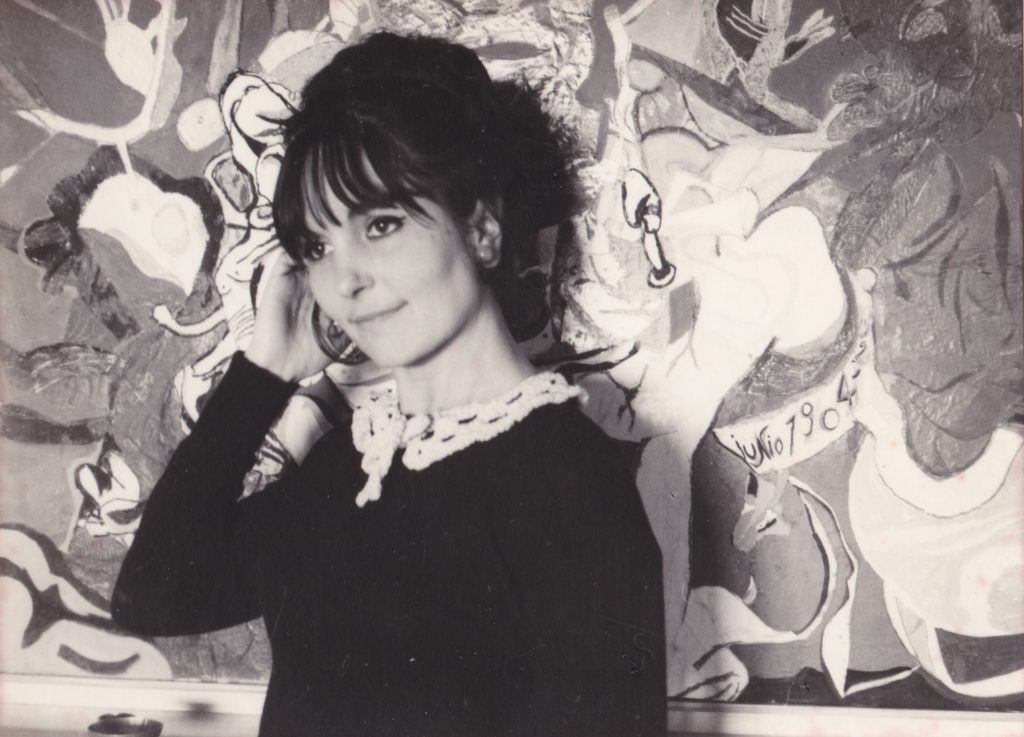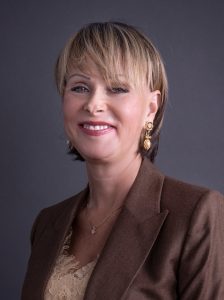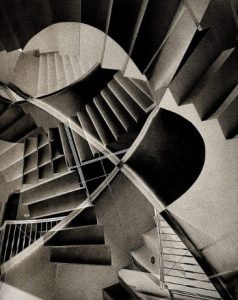פסטיבל “אפוס” מציע שלל סרטים במגוון נושאי אמנות על הסקאלה מאדריכלות ומוזיקה ועד תאטרון וספרות. מבחינתי הפסטיבל חשוב בעיקר לצפייה בקולנוע שסביר שלא יוצג בארץ במסגרות נוספות. שני סרטי האמנות מעניינים הם “פאולה ריגו: סודות וסיפורים” מ 2017 ו”קולאקוב יוצא לחופשי” מ 2019. שני האמנים לא הוצגו בארץ, למיטב ידיעתי, וכל אחד מהם בנה חלק ניכר מהקרירה האמנותית בארץ שאינה מולדתו. בכל נגמר המשותף.
ריגו בת ה 85 היא אמנית מצוינת, כזו שהדימויים שלה נחקקים בזיכרון והופכים מכרים אינטימיים. ילידת פורטוגל ובת להורים אנגלופילים, ריגו הגיעה לאנגליה בתחילת שנות ה 50 ולמדה ב”סלייד” מבתי הספר הבולטים לאמנות. בהמשך חייה חילקה את זמנה בין פורטוגל ולונדון עד שבסוף שנות ה 80 עברה להתגורר בלונדון בלבד . 1988 נערכה רטרוספקטיבה של עבודותיה בסרפנטיין וב 1990 הייתה לאמנית הראשונה שתוכנית הרזדינסי של הנשיונל גלרי. בשני העשורים האחרונים הוצגה שורת תערוכות ענק מעבודותיה בין היתר בלונדון, וושינגטון ומדריד .לאורך השנים העסיקו אותה זכויות נשים, פעילות בעד הזכות להפלות ונושאי חופש אזרחי בכלל. מבחינה סגנונית היא עברה דרך מרתקת מסוראליזם , דרך אבסטרקט ועד פיגורטיבי עשיר, מרתק ועתיר סיפוריות. הסרט נעשה ב 2017 בידי בנה ניק וילינג. וילינג הוא אחד משלושת הילדים שנולדו לה ולוויקטור וילינג שהיה מורה שלה ב”סלייד” ואיתו ניהלה חיים סוערים עד שחלה באמצע שנות החמישים לחייו והיא הפכה למטפלת אפוטרופסית שלו. הציור שלה פוליטי מאד ומשך שנים התייחסה בו באומץ לכוחות הדיקטטורה בפורטוגל מולדתה ובספרד. הדמויות הנשיות הן לעולם היא עצמה והיקום שהיא בוראת להן רווי תשוקה, מינית ואינטלקטואלית, וכאב וחיוניות וחיות אדירה.

The Pillow Man Triptych Studio
Pic-CREDIT-PRU-CIMMINGS.
חיוניות מאפיינת גם את העבודות של מיכאיל קולאקוב שהלך לעולמו לפני חמש שנים. קולאקוב היה חלק מהאוונגרד הרוסי של שנות ה 60, ועזב מסיבות פוליטיות לאיטליה במחצית שנות ה 70. במהלך שנות החמישים והשישים הציג בתערוכות ביתיות עבודות אבסטרקטיות והתדיין עם האבסטרקט האקספרסיוניסטי וציור הפעולה האמריקאים. באיטליה פעל באומבריה והיה לחלק מהזרם המרכזי האיטלקי. האוונגרד הרוסי המאוחר זוכה להתעניינות רבה בשנים האחרונות, גם בארץ, בעיקר לאור הקריאה שלו מחדש לא כחיקוי להדים שהגיעו למערב אלא כהמשך לאוונגרד הרוסי המוקדם ודיון עם ההתפתחויות שהיו במערב. קולאקוב נחשב לאחד האמנים הבולטים של התקופה שמוכרת בארץ בעיקר מהפרספקטיבה של אמנים יהודים חברי הקבוצה שהגיעו לארץ.

הפסטיבל הוא גם הזדמנות לראות את סרטה של זיוה פוסטק על משה גרשוני מ 1998, וסרט חדש על אולאפור אלייסון מהאמנים המעניינים הפועלים היום.
***
שלושה פסלים מצוינים של קדישמן שראיתי באקראי בשבוע שעבר גרמו לי לחשוב מחדש על יצירתו. ספק אם יש עוד אמן שהצליח לאורך שנים לשחוק את מעמדו שלו כמו קדישמן, ובאופן יסודי כל כך. הפסלים הם תזכורת לצדדים המעולים ביצירתו, ובאופן עצוב למדי לגוף העבודה שיכול היה ליצור. 
בגלריה דביר מוצגים “מזבח” מ 1961 נפסל ברונזה קטן צבוע לבן בו ניכרת ההשפעה של דנציגר ובאופן כלשהו גם רודי להמן . “מעל I” פסל בגרניט וזכוכית מ 1964 . מעניין לחשוב על השינוי שעבר קדישמן בשלוש שנים. ב”מעל I” חזית הגרניט הגסה עוד נראית כמו לוח טין עם כתב (אפשר להרחיק לכת לציור של קסטל) אבל כוחו באופן בו קדישמן מטפל במשקל וחלל . לשני הפסלים נעשו גרסאות גדולות (“מזבח”שהיה בגבס ולפי קטלוג קדישמן מ 1996, נהרס) .

ראש כלב המוצג כעת בגלריה גורדון מפתיע. הפסל היפיפיה מאבן נעשה ב 2015, שנת מותו של קדישמן. הראש הכרות, הנוגע ללב הוא הרהור, המשך לפסל שיצר ב 1957 וכבר שנים שאני חושבת עליו כאחת הטובות ביצירותיו, לצד התקופה המינימליסטית הקצרה והמרתקת שלו. כאן הראש על צידו, מתכתב עם ברנקוזי ללא כחל וסרק, מדבר על מוות ונצח בעצבות, ללא פאתוס, ועם מידה של השלמה. הבחירה החומרית, הגודל, ההצבה על משטח האבן כורכים יחד הוד, ומינימליזם ושקט ותחושה של הבנה מפוכחת, אפילו מפויסת, של הזמן של היות הכל בר חלוף.
לקביעת סיורים פרטיים או הצטרפות לקבוצת סיורים
שילחו Whats app ל 0507431106
עקבו אחרי באינסטגרם smadarsheffi

Some thoughts on the EPOS Festival and Kadishman’s sculptures
The EPOS Festival offers a wide range of films on the arts, from architecture and music through theatre and literature. As I see it, the Festival is important mainly because it screens films that will probably not be shown in Israel in other frameworks. Two interesting films on art and artists are Paula Rego: Secrets and Stories (2017) and Koulakov’s Supreme Ultimate (2019). To the best of my recollection, neither artist has been exhibited in Israel, and both have spent most of their art careers outside their home country.

Rego, now 85, is a superb artist, one whose images remain imprinted in one’s memory to become intimate acquaintances. Born in Portugal to Anglophile parents, Rego arrived in the UK in the early 1950s and studied at the Slade, one of Britain’s most outstanding art schools. She divided her life between Portugal and London until in 1980 she settled permanently in London. In 1988, she had a major retrospective at the Serpentine, and in 1990 the first woman artist in residence at the National Gallery. Over the past two decades, she exhibited in major exhibitions in London, Washington, and Madrid, among other cities. She has always engaged in women’s rights, activities against discrimination, and civil rights in general. From a stylistic aspect, she moved in a fascinating way from Surrealism to Abstraction to a rich figurative, narrative approach. The film was made in 2017 by her son, Nick Willing, one of her three sons with Victor Willing, who had been her teacher at the Slade. The two led a stormy life until she became his caregiver and guardian in the mid-‘50s (due to his degenerative illness). Rego’s oeuvre is extremely political, and for years she courageously referred to the dictatorships in Portugal and Spain in her paintings. The women’s figures are always the artist herself; the universe she creates for them are suffused with passion, sexuality and intellectuality, with pain and incredible vitality.
Vitality also characterizes the works by Mikhail Koulakov, who passed away five years ago. Koulakov had been part of the Russian Avant-Garde of the 1960, but left the USSR for Italy in the mid-‘70s. During the ‘50s and ‘60s (under the Soviet regime) he exhibited his abstract paintings priately, engaging in dialogue with Abstract Expressionism and American Action Painting. In Italy, he was active in Umbria, becoming part of the Italian mainstream. In recent years, the Russian Avant-Garde has drawn more attention, in Israel as well, due to reading it anew not as an imitation of western art, but as a continuation of the early Russian Avant-Garde, and its dialogue with developments in the west. Koulakov was considered one of the most outstanding artists of the period, well-known in Israel mainly due to the Jewish artists from the group who arrived in Israel.
The Festival is also an opportunity to view Ziva Postec’s 1998 film on Moshe Gershuni –M.G. Rehearsals for Departure, and a new film about Olafur Eliasson, one of the most interesting of active contemporary artists.
***
Three excellent sculptures by Kadishman I saw by chance in a single week led me to rethink his work. I’m not sure if there is any other artist who has succeeded in wearing away his position as Kadishman did, and in such a fundamental way. Nevertheless, the sculptures are a reminder of the excellent aspects of his oeuvre, and, very sadly, a hint at the oeuvre he could have created.
At the Dvir Gallery, Altar (1961), a small bronze painted white, is on view, in which Danziger’s influence is evident, as is Rudi Lehmann’s, in some way. Interesting to think about the change Kadishman underwent in three years between Altar and Uprise I (1964) in glass and granite. The crude granite façade looks like a surface of טין?mud? silt? with lettering (I thought of Castel’s painting, even though it’s a wild comparison) a far-fetched comparison), but Kadishman’s strength is eviden in the way he deals with weight and space. Both sculptures exist in large-scale versions (Altar was in plaster, and according to the 1996 catalog on Kadishman, was destroyed).

The dog’s head currently on view at the Gordon Gallery is surprising. This lovely stone sculpture was made in 2015, the year Kadishman passed away. The heartrending, severed head, is a contemplation, a continuation of the statue he made in 1957. For years I have been thinking about it as one of his best works, along with his short but fascinating period of minimalism. Here the head lies on its side, corresponding directly and unabashedly with Brancusi, speaking sadly but without pathos about death and eternity, with some degree of acceptance. Taken all together, the choice of material, size, and placement on the stone plinth create a feeling of glory, minimalism, and quiet, with a sober understanding of the passing of time, perhaps even a feeling of reconciliation with the mortality of all living things.






